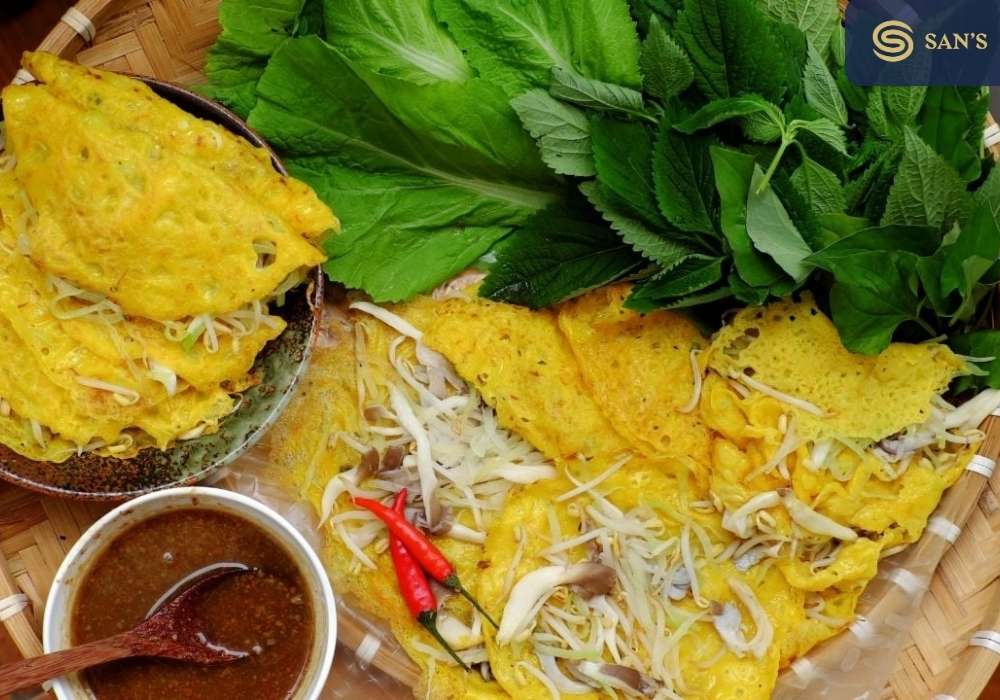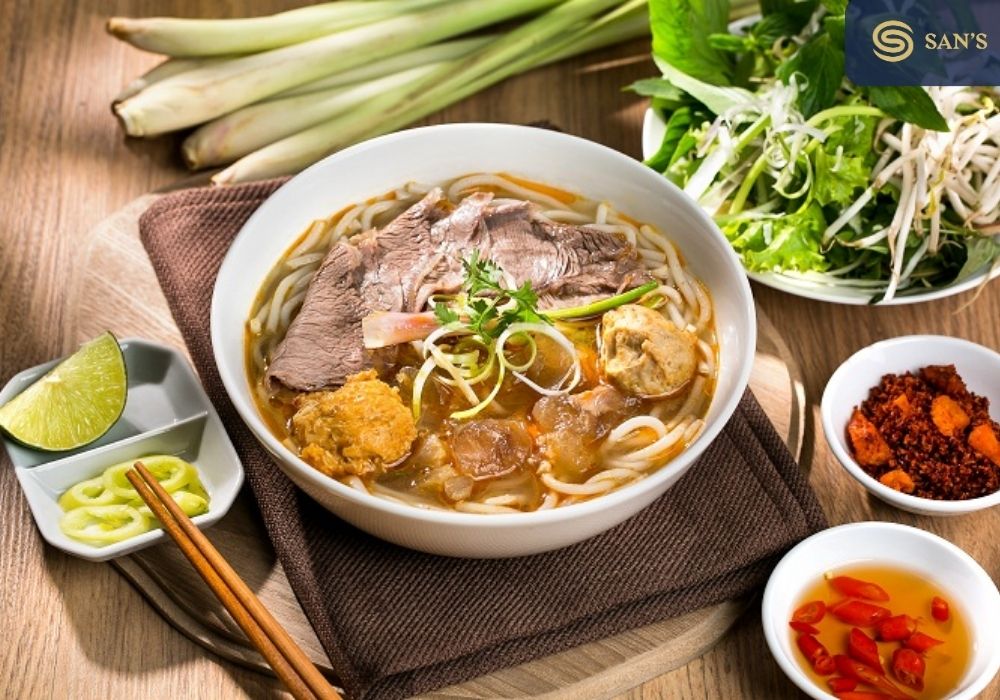Dive into Vietnam’s culinary wonders with our list of the top the best Vietnamese food. Discover iconic dishes, their rich history, and where to find the most authentic flavors.. Vietnamese cuisine is a captivating fusion of history, culture, and a palette of diverse flavors. Rooted in age-old traditions, it seamlessly merges simplicity with complex culinary artistry, resulting in dishes that resonate with both authenticity and innovation.
Influenced by centuries of Chinese and French colonization, Vietnamese dishes have evolved, embracing these external elements while maintaining their distinct identity. Central to this cuisine is the use of fresh, local ingredients and time-tested techniques that highlight the essence of each dish. As we embark on this journey, we’ll explore the top Vietnamese foods that beautifully encapsulate the spirit of this rich culinary landscape.
Top 10 Best Vietnamese Foods that traveler love most
1/Pho: Dive deep into the soothing bowls of Pho, Vietnam’s iconic noodle soup. Its origins trace back to Northern Vietnam, with each region offering a twist on this classic. More than just a meal, Pho represents the very soul of Vietnamese culture, often enjoyed as a breakfast staple and symbolizing warmth and comfort.

2/Banh Mi: Banh Mi sandwiches perfectly encapsulate the marriage between French baguettes and Vietnamese flavorful fillings. From succulent meats to pickled vegetables, every variant tells a different story, representing the nation’s colonial past and its resilient spirit.

3/Bun Thit Nuong: Bun Thit Nuong is a symphony of textures and flavors with grilled meat (often pork) over delicate vermicelli noodles. Adored especially in Southern Vietnam, it reflects the region’s love for grilled dishes and fresh herbs.

4/Goi Cuon (Fresh Spring Rolls): Unlike their fried counterparts, Goi Cuon celebrates freshness. Packed with crisp vegetables, prawns, herbs, and often pork, these translucent rolls, paired with a tangy dipping sauce, encapsulate Vietnam’s commitment to fresh and balanced meals.

5/Banh Xeo: Listen to the sizzle of the Banh Xeo, a crispy, savory pancake filled with shrimp, pork, and bean sprouts. This golden-yellow delight, reminiscent of a crepe, offers a crunchy exterior complemented by its rich fillings.

6/Ca Kho To (Caramelized Fish in Clay Pot): Experience the deep, rich flavors of Ca Kho To, where fish gets a caramelized treatment in a traditional clay pot. This Southern Vietnamese dish is a testament to the region’s innovative culinary techniques and its abundant aquatic resources.
7/Bun Cha: Hailing from the streets of Hanoi, Bun Cha features grilled pork, often in the form of meatballs, over vermicelli noodles, served with a side of dipping sauce. It’s a dish that speaks to the heart of Northern Vietnam, resonating with both locals and travelers alike.

8/Nem Rán (Fried Spring Rolls): Savor the crunch of Nem Rán, Vietnam’s answer to fried spring rolls. With a golden exterior enveloping a mix of meats and vegetables, these rolls are a universally loved starter, often dipped in a tangy fish sauce mixture.

9/Banh Canh: Delve into the thick and hearty broth of Banh Canh, a noodle soup that stands out for its chewy, udon-like noodles. Depending on the region, it might be enhanced with crab, shrimp, or other proteins, offering variations that cater to every palate.
10/Com Tam (Broken Rice): Discover the humble origins and immense flavors of Com Tam, or broken rice. Once considered the ‘poor man’s meal’, this dish has risen in stature, often served with grilled pork, but its combinations are endless, each more delectable than the last.

As we journey through this list, it becomes evident that Vietnamese food, with its rich tapestry of flavors and stories, is more than just sustenance; it’s an experience, a narrative of a nation’s past, present, and its hopeful future.
Regions & Cities for Iconic Dishes:
- Hanoi (Northern Vietnam):
- Must-Try: Pho and Bun Cha. Hanoi is the birthplace of Pho, and while you’ll find it nationwide, tasting it in its city of origin is an unparalleled experience. Bun Cha, grilled pork served with rice vermicelli, is another Hanoian specialty.
- Local Gem: Venture to the Old Quarter early in the morning to catch local eateries preparing steaming bowls of Pho for breakfast.
- Hue (Central Vietnam):
- Must-Try: Bun Bo Hue, a spicy beef noodle soup that is the pride of this ancient city.
- Local Gem: The Dong Ba Market offers an array of local foods, where you can savor authentic Hue dishes.
- Ho Chi Minh City (Southern Vietnam):
- Must-Try: Banh Xeo and Com Tam. The southern variants of these dishes, with their distinct flavors, are a treat for the senses.
- Local Gem: District 1’s Ben Thanh Market is a food haven, bustling with stalls serving fresh, delectable Vietnamese dishes.
Navigating the culinary landscape of Vietnam has been a delightful journey, filled with tales of dishes that meld history and flavor. From Hanoi’s comforting Pho to the spicy undertones of Bun Bo Hue and the crispy Banh Xeo of Ho Chi Minh City, each dish offers a unique taste of this vibrant nation.

But the real magic lies in tasting, not just reading. So, to our readers: Vietnam’s aromatic streets await your exploration. Embrace the adventure, delve into these dishes firsthand, and let the authenticity of Vietnamese cuisine captivate your senses. After all, true love for food comes from experiencing it.
1. What makes Vietnamese cuisine unique?
Vietnamese food is celebrated for its balance of five flavor elements: spicy, sour, bitter, salty, and sweet. Fresh herbs, seafood, rice, and a masterful blend of spices give it a distinct and harmonious taste. Its focus on fresh ingredients and minimal use of dairy and oil makes it one of the healthier choices in global cuisines.
2. How prevalent are street foods in Vietnam?
Street food is integral to Vietnamese culture. Cities like Hanoi and Ho Chi Minh City are brimming with roadside stalls offering a plethora of dishes. From early morning Pho vendors to late-night Banh Mi stands, street food is both a local favorite and a tourist attraction.
3. Are Vietnamese dishes predominantly spicy?
While some dishes from central Vietnam can be spicy, Vietnamese cuisine, in general, is not overly hot. It’s more about the harmony of flavors, and diners can adjust the spiciness to their liking with condiments like chili sauce.
4. What are some must-try vegetarian dishes?
Vietnam offers a variety of vegetarian dishes. Some popular options include “Bun Chay” (noodle salad with tofu), “Goi Cuon Chay” (vegetarian fresh spring rolls), and “Banh Xeo Chay” (vegetarian crispy pancakes).
5. How significant is the French influence on Vietnamese cuisine?
The French colonial period left a mark on Vietnamese food. The most notable example is the Banh Mi sandwich, which combines a French baguette with Vietnamese fillings. You’ll also find dishes like pâté and coffee with condensed milk, showcasing this fusion.
6. Is it safe to eat street food in Vietnam?
While many locals and tourists relish Vietnamese street food without issues, it’s always crucial to choose clean stalls with high foot traffic. It’s also recommended to drink bottled water and avoid raw or undercooked seafood.
7. What is the role of rice in Vietnamese dishes?
Rice is a staple in Vietnamese cuisine. It’s not just limited to the grain; rice is also transformed into noodles, wrappers for spring rolls, and even wine. Dishes like “Com Tam” (broken rice) and “Bun” (rice vermicelli) highlight its significance.
8. Why are herbs so commonly used in Vietnamese food?
Herbs add freshness, flavor, and a unique aroma to Vietnamese dishes. They’re not just garnishes but are integral to the overall taste. From mint and cilantro to lemongrass and perilla, these herbs elevate the sensory experience of the cuisine.
>>> See more: 10 things to do in Hanoi


